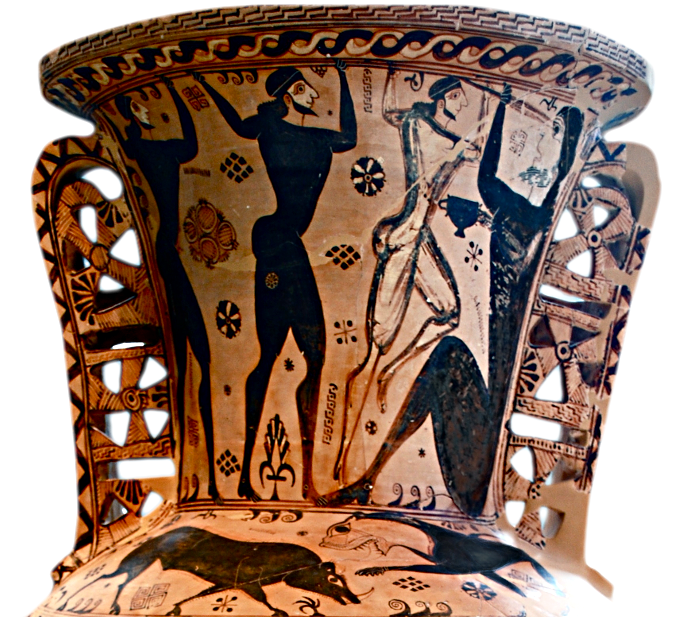As when a shipwright with his wimble bores
Tough oaken timber, placed on either side
Below, his fellow-artists strain the thong
Alternate, and the restless iron spins,
So, grasping hard the stake pointed with fire,
We twirl'd it in his eye; the bubbling blood
Boil'd round about the brand; his pupil sent
A scalding vapour forth that sing'd his brow,
And all his eye-roots crackled in the flame.
As when the smith an hatchet or a large axe
Tempr'ing with skill, plunges the hissing blade
Deep in cold water, (whence the strength of steel)
So hiss'd his eye around the olive-wood.
Like most translators Cowper has translated Homer's original word βαπτω meaning "dip" (as in "baptize") as "temper." In fact the Poet is describing quenching, not tempering.
This is precisely what this project is all about―design of multiphase, as quenched, tough, lean (low cost, resource efficient) steel (MATLeS)

Detail of Polyphemus Amphora (Eleusis Amphora), name vase of the
Polyphemus Painter, proto-Attic neck amphora, ca. 650 BC.
https://www.flickr.com/photos/sarah_c_murray/4083489970, CC BY 2.0, Link